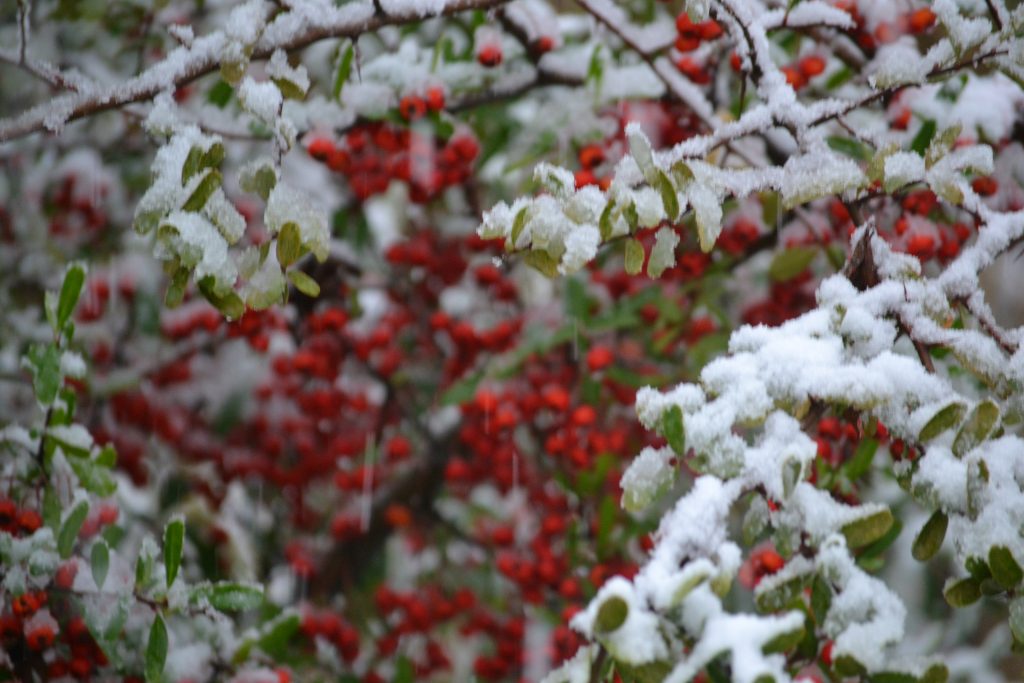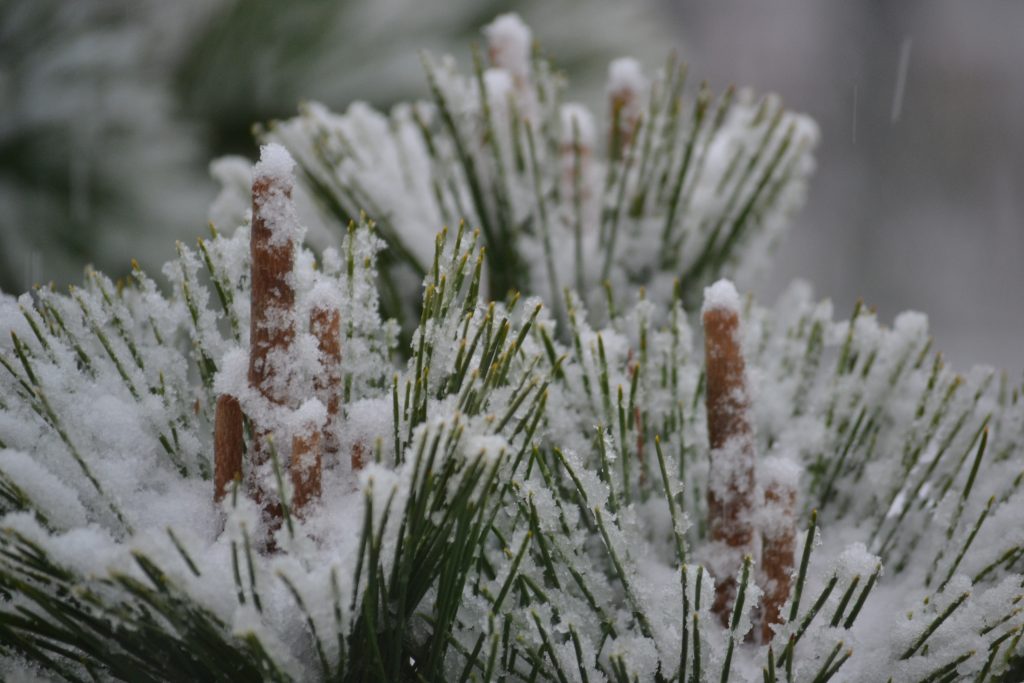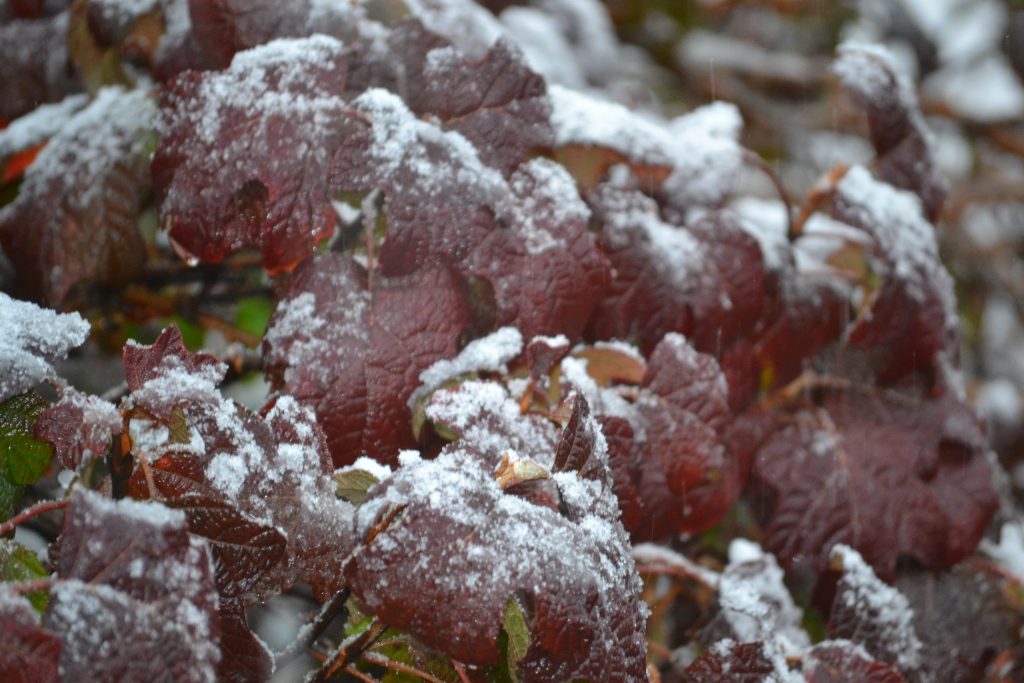
The new year has been a joy to take some time from the landscape job sites to visit the botanical gardens to get some snow pics! Pyracantha is a plant I am really starting to love. They have their major pros and cons. For pros, they offer bright, beautiful long-lasting berries that last for at least two-three months, and bloom prolific tiny white blossoms in the spring! They can be kept any desired size with only a few trimmings per year. Ultimately, they will grow to become a giant hedge if left untouched by our trimmers. They can be trained to be the perfect vine for a trellis. The do not grow roots into the brick an must be trained and trimmed to get the desired vine like affect. This makes them perfect for espalier training. Unlike most holly, they do not need a male plant to produces berries and are also very disease resistant.

Thunderhead is a great conifer for gardens. If left alone, this plant will slowly reach 10 feet wide and up to 15 feet tall. They can be pruned to be kept what ever size desired. The new grow is called candles. In Japan, trimming the candles of the large black pine trees is a celebrated tradition. Owning a Thunderhead, you too can celebrate this tradition on a dwarf scale!

I love this hydrangea for its dwarf habit, prolonged bloom time, and year-round interest. So many of my clients tell me no and quiver at the though of planting an oak leaf hydrangea on their property. (If you are reading and know this is you, I would jokingly like to say SHAME ON YOU!!!) Many oak leaf hydrangeas will grow to a giant size of 15-20ft! Ruby Slippers is the perfect mini version of that. I have never see one larger that 5 feet tall an wide. They also seem to hold onto their leaves better through the winter, as you can see on the picture above on a snowy, February morning.

Winterberry holly is a safer, less long lasting version pyracantha. scrolling up and down this screen, you may hardly be able to tell the difference shy of the fact that pyracantha is an evergreen (another pro!). There are different sizes of winterberry holly on the market, so they can be 3’x3′ or 15’x15′ depending on the variety. They do need a male. We usually hide them in the back of the female. The males are hard to find and very expensive compared to their female counterparts. I have learned there are even nurseries I cannot trust for providing true male holly. since this plant is deciduous, it pops when planted in front of a yellow or green evergreen.
Major con: thorns. These plants produce dangerous, one-inch or more long thorns. This makes great hideouts for birds, deer hate them, and they make your home so much safe. No burglar will be lurking behind this plant waiting for you to come home. I do feel for the gardener or homeowner that has to prune this plant. The pruner must aware of what they are doing at all times, and googles and gloves are a must! I highly recommend this plant for your home.





